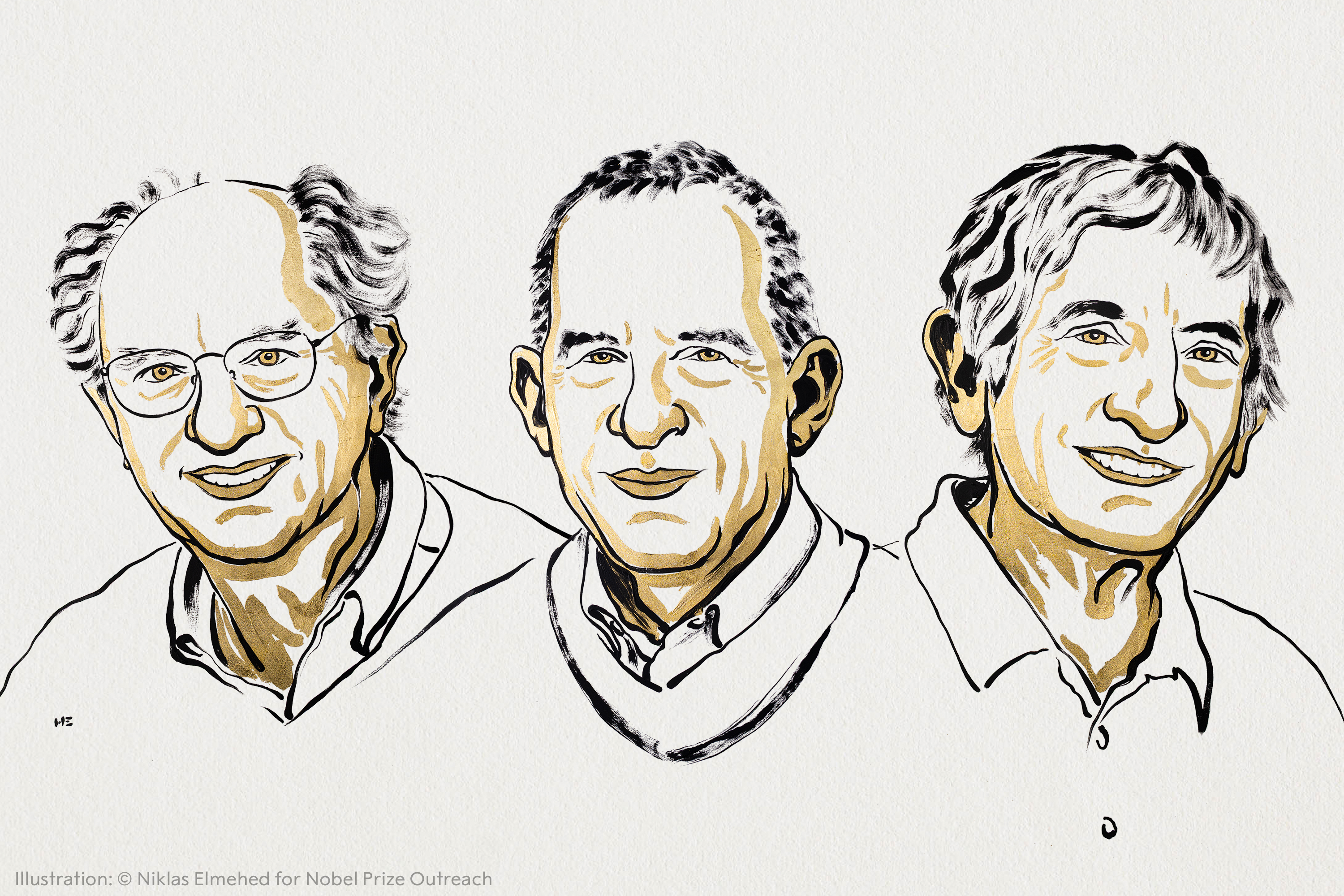Nobel Prize in physics goes to three scientists who discovered bizarre quantum effect on large scales
The 2025 Nobel Prize in Physics has been awarded to John Clarke, Michel H. Devoret and John M. Martinis "for the discovery of macroscopic quantum mechanical tunnelling and energy quantisation in an electric circuit."

The 2025 Nobel Prize in Physics has been awarded to a trio of researchers for discovering quantum mechanics on a whole new scale — one big enough to hold in your hand.
John Clarke of the University of California, Berkeley, Michel H. Devoret of Yale University and the University of California, Santa Barbara, and John M. Martinis of the University of California, Santa Barbara, received the prestigious prize "for the discovery of macroscopic quantum mechanical tunnelling and energy quantisation in an electric circuit."
The Royal Swedish Academy of Sciences announced the winners at a ceremony in Stockholm, Sweden, on Tuesday (Oct. 7). This is the 119th Nobel physics prize and comes with a cash prize of 11 million Swedish kronor ($1.2 million).
"To put it mildly, it was the surprise of my life," Clarke said by phone at a news conference. "I'm completely stunned, of course. It never occurred to me in any way that this might be the basis of a Nobel Prize."
He said that his discovery (which underlies the advanced microchips present in many modern-day technologies, including smartphones) is being used for the further development of quantum computers.
Clarke, Devoret and Martinis carried out experiments in which they were able to demonstrate quantum mechanical tunneling and quantised energy levels in an electrical circuit "big enough to hold in your hand," according to a statement released by The Royal Swedish Academy of Sciences.
Quantum tunneling enables particles to pass through seemingly impassable barriers. This is because in quantum physics particles exist as both waves and particles simultaneously; those waves are the projected probabilities of the particle existing in a given space.
Get the world’s most fascinating discoveries delivered straight to your inbox.
Much like a wave smashing against a groin at sea will result in a smaller wave propagating to the other side, particles that exist as waves also have some probability of existing at the other side of a barrier. It is this ability that allows electrons to leap between material layers that would otherwise be impassable, at least according to large-scale physical laws.
Prior to the researchers' discovery, quantum tunneling had been observed in single particles, but physicists soon wondered if multiple particles could tunnel at a single time. One way this could be done is by making materials extremely cold, transforming them into superconductors by prompting electrons to bind together into so-called "Cooper pairs."
Cooper pairs follow different quantum mechanical rules than those of lonesome electrons. Instead of stacking onto each other to form energy shells, they act like particles of light, or photons, an infinite number of which can occupy the same point in space at the same time. If enough of these Cooper pairs are created throughout a material, they become a superfluid, flowing without any loss of energy from electrical resistivity.
To make their discovery, the researchers sandwiched two superconductors between a thin insulating barrier — creating an experimental setup known as a Josephson junction. Working together in the mid-1980s, the scientists screened their own Josephson junction from interference before feeding a weak electrical current into it.
Initially the voltage across this circuit was zero, indicating that no current was flowing through the barrier. But repeating their experiment multiple times, the researchers soon found that a voltage did appear across the apparatus at various points in time. This showed that the electrons were indeed tunneling across the system, acting as a single, large-scale particle.
Firing microwaves to be absorbed by the electrons showed that, despite their collective state being macroscopic, the Cooper-paired electrons had discrete, quantized energy levels.
This discovery has had a number of practical applications in physics and beyond. The collective system is referred to as an artificial atom, from which numerous experiments and quantum technologies have been developed.
"It is wonderful to be able to celebrate the way that century-old quantum mechanics continually offers new surprises," Olle Eriksson, chair of the Nobel Committee for Physics, said in the statement. "It is also enormously useful, as quantum mechanics is the foundation of all digital technology."

Patrick Pester is the trending news writer at Live Science. His work has appeared on other science websites, such as BBC Science Focus and Scientific American. Patrick retrained as a journalist after spending his early career working in zoos and wildlife conservation. He was awarded the Master's Excellence Scholarship to study at Cardiff University where he completed a master's degree in international journalism. He also has a second master's degree in biodiversity, evolution and conservation in action from Middlesex University London. When he isn't writing news, Patrick investigates the sale of human remains.
- Ben TurnerActing Trending News Editor
You must confirm your public display name before commenting
Please logout and then login again, you will then be prompted to enter your display name.
